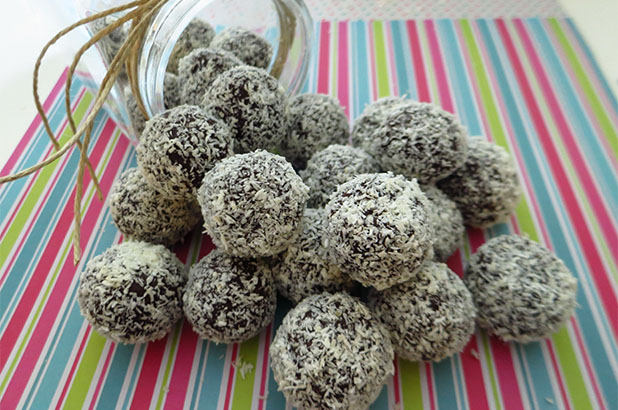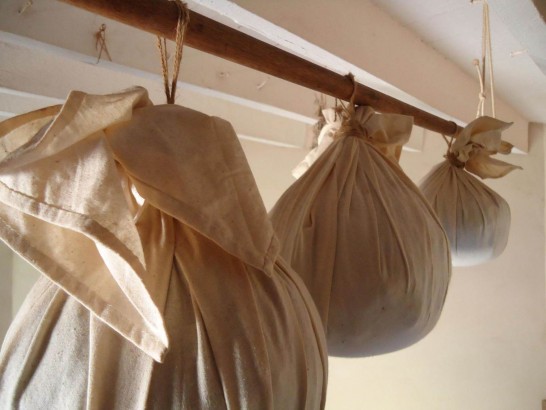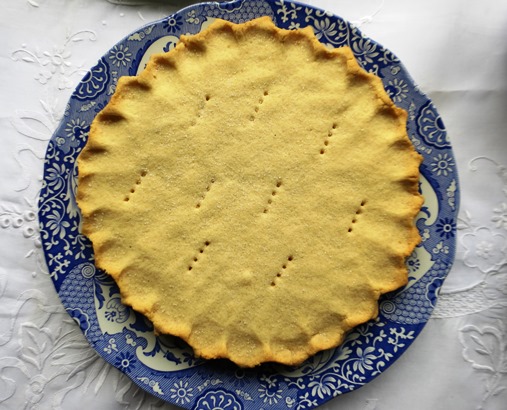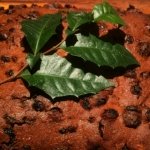T’is the week before Christmas – and egads! I’d better get on with the festive fare. It’s not too late to make a pudding, for the family table or as a gift for friends, or home made treats that follow long-standing Christmas traditions.
The ubiquitous Christmas plum pudding
According to Mrs Beeton (1861), making the Christmas plum pudding was a principal household duty in the month of December. The Wentworth family’s household accounts from Vaucluse in the 1840s show that some 70 pounds (over 30 kgs) of dried fruit, peel and spices were purchased in December. The same accounts show that they bought their mince pies from a local providore (perhaps pastry wasn’t the cook’s forte?) so this volume of fruit suggests that there was a lot of pudding making happening! Their’s was a large family, but puddings were also made for the staff to enjoy.
“Up to her elbows mixing a pudding”
In some households in the colony the the pudding wasn’t made until the big day itself. Annabella Boswell noted in 1850 that her aunt made the pudding very early on Christmas morning. This alters our perception of a wealthy household, where the mistress of the house may not step foot in the kitchen, but send instructions via a butler or housekeeper, or perhaps supervise proceedings. Annabella’s aunt, Margaret Innes (nee Macleay, from Elizabeth Bay House), was apparently ‘up to her elbows mixing a pudding’ for their Aboriginal labourers’ celebratory roast beef dinner, and Annabella herself had made shortbread a few days before.
Heirloom recipes
Home-made treats are always valued, not simply because they can be delicious, but for the personal connection they bring, and the very precious gift of time and thought that goes into making them.
There’s a perception that Christmas puddings are difficult to make, but I’ve made several over the past few weeks and once the ingredients are set up, they’re remarkably simple. They do need a long time to cook – 6 hours as a rule, according to traditional recipes, but other festive options require less time in the kitchen. Rum balls (shown above) are tasty morsels with a Christmas tipple and shortbread, as Annabella Boswell attests, are a yuletide tradition. Heirloom recipes from families who lived in our historic houses include the traditional Scottish style shortbread that was made by Aunt Kate at Meroogal and Greek style shortbread that Mrs Sarantides made at Susannah Place in the 1940s. And don’t forget good old fashioned gingernut biscuits made with treacle from the Rouse family (recipe below), so click on the links for tried and tested recipes from our cookbooks and manuscript recipe collections!
Get the kids in the spirit of things
If you have children who enjoy time in the kitchen, send them to our Children and family pages for craft and cooking ideas designed for creative kids – ideal activities for the school holidays. Step-by-step recipes include jelly oranges, old fashioned lemonade and a child friendly gingerbread biscuit recipe which kids might like to bake in festive shapes for friends and family.
A Christmas fare
For those who don’t see themselves donning the festive apron this year, our Christmas Fare in the grounds of Hyde Park barracks tonight (Thursday December 18) may be the perfect solution for all things Christmas. Dozens of artisan producers will be selling their specialties and oozing with ideas for gifts and Christmas catering.
Gingernuts
Ingredients
- 225g treacle
- 110g butter
- 110g brown sugar
- 450g (2 2/3 cups) plain flour
- 25g ground ginger
- pinch salt, optional
- 1 teaspoon bicarbonate of soda
- 60ml (1/4 cup) milk
- icing sugar, to dust (optional)
Note
This is a handwritten recipe from the Rouse Hill Estate collection of cookbooks and manuscript recipes. Depending on how long you bake them, these biscuits can be hard and crunchy or a softer gingerbread style.
Makes up to 30 biscuits
Directions
| Preheat oven to 160°C (140°C fan-forced). Melt the treacle and butter together in a saucepan over low heat. Leave to cool a little. | |
| Meanwhile, put the brown sugar in a bowl. Sift the flour, ginger and a pinch of salt (if using) into the bowl and mix lightly together. | |
| Dissolve the bicarbonate of soda in the milk then add to the butter and treacle mixture, stirring well. Add the wet ingredients to the dry ingredients and mix well until a smooth, glossy dough is formed. Line a baking tray with baking paper. Taking small, walnut-sized portions, roll the dough into balls and flatten them in your hands or gently press them into shape on the baking tray. Alternatively, if you are using a biscuit cutter, divide the dough into two and roll each batch between two sheets of baking paper to about 0.5–1 cm thickness before cutting the dough into shapes. Bake for 30 minutes for semi-hard biscuits, 40 minutes for crispier ones, or adjust the cooking time to suit your preference. The biscuits will harden as they cool, so you might want to test a few before cooking the whole batch. Dust with the icing sugar, if using. | |
Adapted from a handwritten recipe, found inside Nina Terry’s (nee Rouse) copy of Warne’s Model Cookery c1880. Author unknown. Rouse Hill House & Farm collection.




 Print recipe
Print recipe

